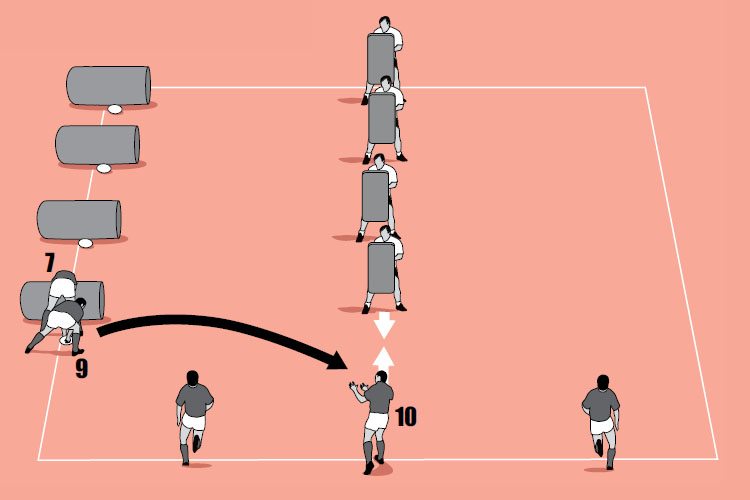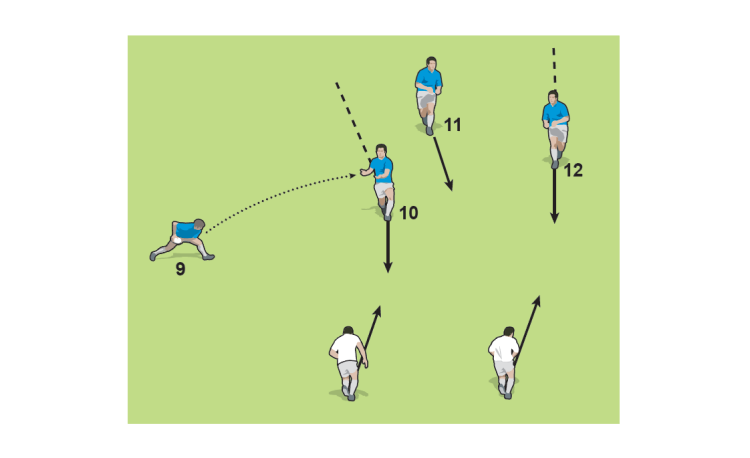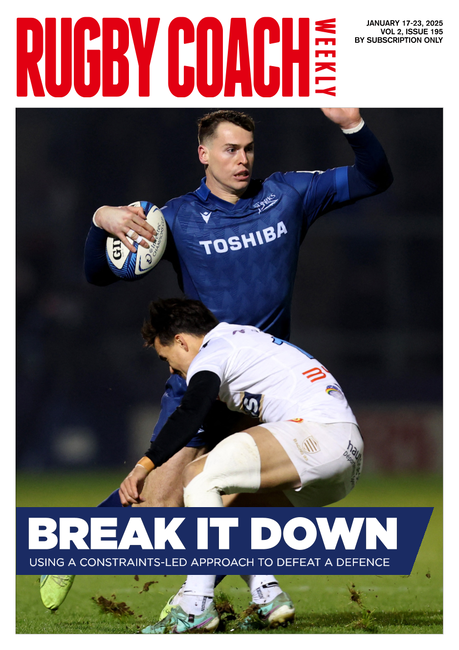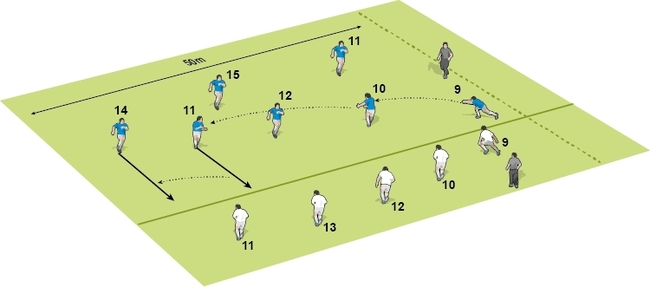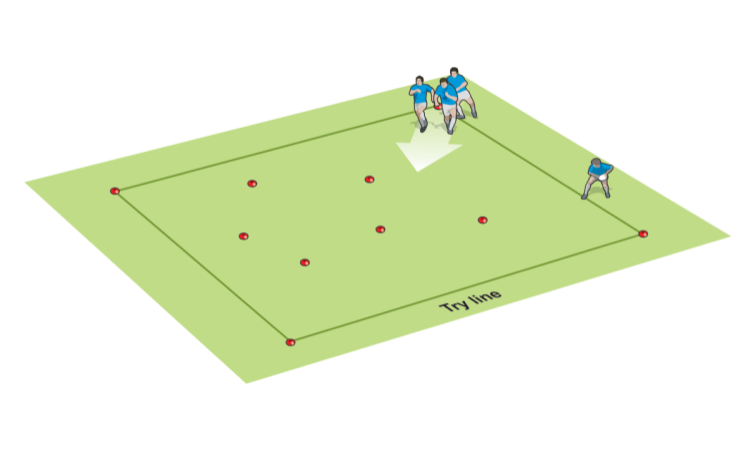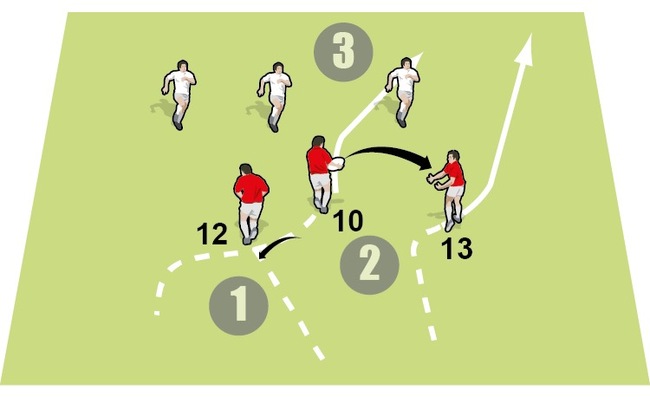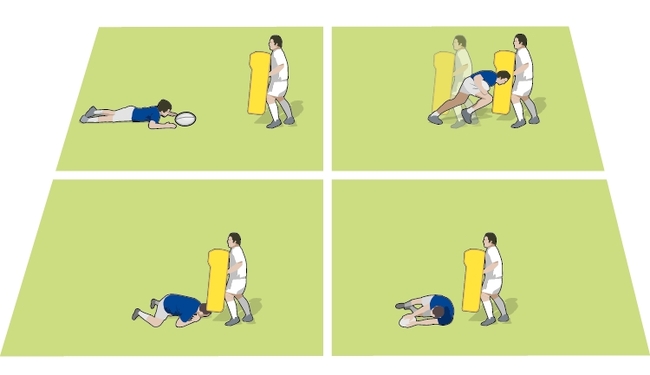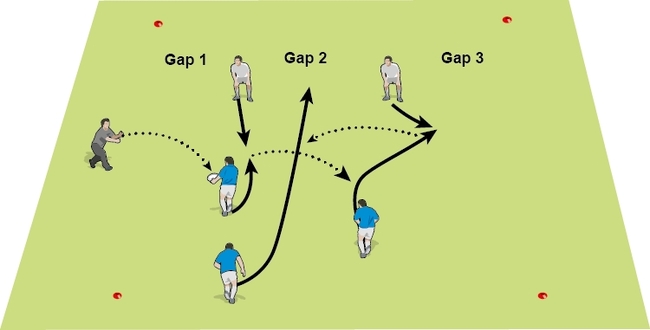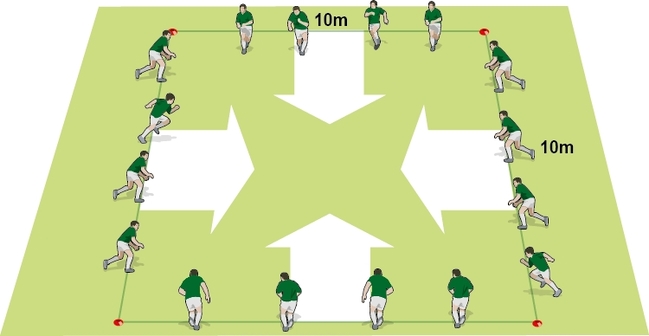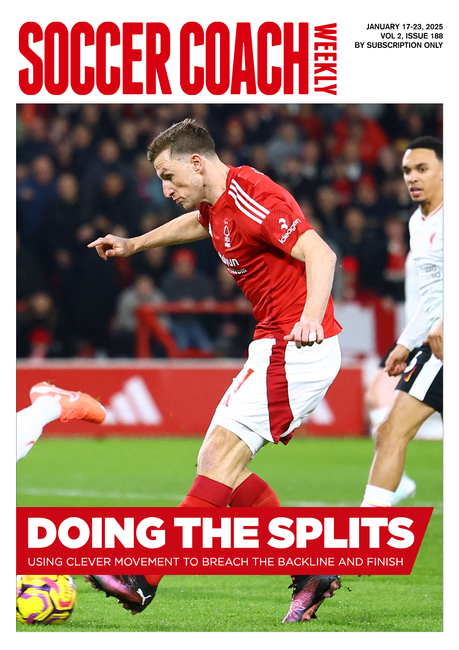Stop 10 drifting
Hardwire your fly-half to run straight, after they have received the ball, so they don’t cut down the space for their outside backs by using these activities.
WHY USE IT
Once the fly-half has received the ball, they must not slide across the field, otherwise they will not fix the defenders in front of them.
SET-UP
Use six cones, three ruck pads and a ball.
HOW TO PLAY
EXERCISE
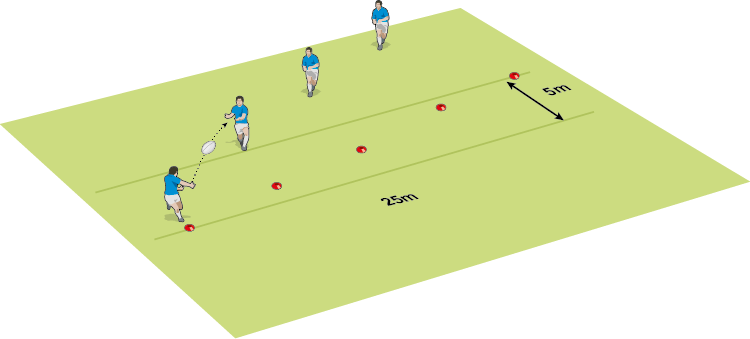
Put a feeder by the first cone (see top picture) and three attackers opposite a cone each. The diagonal line of cones is equivalent to where they might be tackled. The feeder passes out the ball and each player must pass in front of the cone. Once through, they can turn and repeat the exercise in the other direction. Then, adjust the cones so they are passing in the opposite direction.
GAME SITUATION
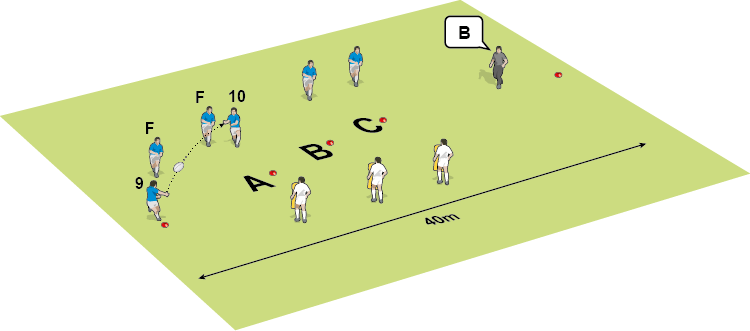
Set up a feeder, two forwards (F), a 10 and two backs opposite three lettered cones and three ruck pad-holders. Indicate which cone to attack.
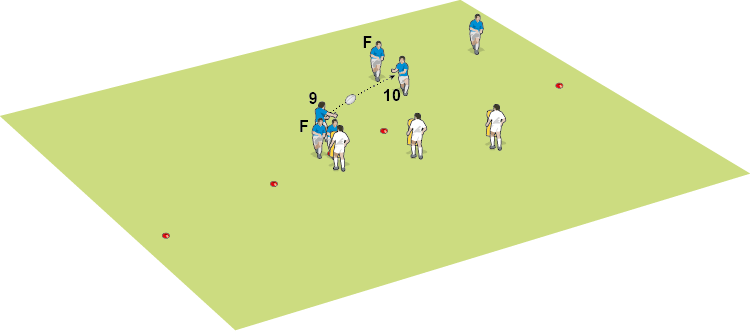
The 10 feeds a forward or a back after they have received the pass. That player goes into the ruck pad and presents the ball, with one forward going over to secure the ball. The backs then realign to attack again, with the emphasis on the 10 to run straight.
COACHING POINTS
-
Once the ball is received, face the hips up the pitch.
-
Start with the outside foot forward to help to start straight rather than drift.
Related Files
Newsletter Sign Up
Coaches Testimonials

Gerald Kearney, Downtown Las Vegas Soccer Club

Paul Butler, Florida, USA

Rick Shields, Springboro, USA

Tony Green, Pierrefonds Titans, Quebec, Canada
Subscribe Today
Be a more effective, more successful rugby coach
In a recent survey 89% of subscribers said Rugby Coach Weekly makes them more confident, 91% said Rugby Coach Weekly makes them a more effective coach and 93% said Rugby Coach Weekly makes them more inspired.
Get Weekly Inspiration
All the latest techniques and approaches
Rugby Coach Weekly offers proven and easy to use rugby drills, coaching sessions, practice plans, small-sided games, warm-ups, training tips and advice.
We've been at the cutting edge of rugby coaching since we launched in 2005, creating resources for the grassroots youth coach, following best practice from around the world and insights from the professional game.
